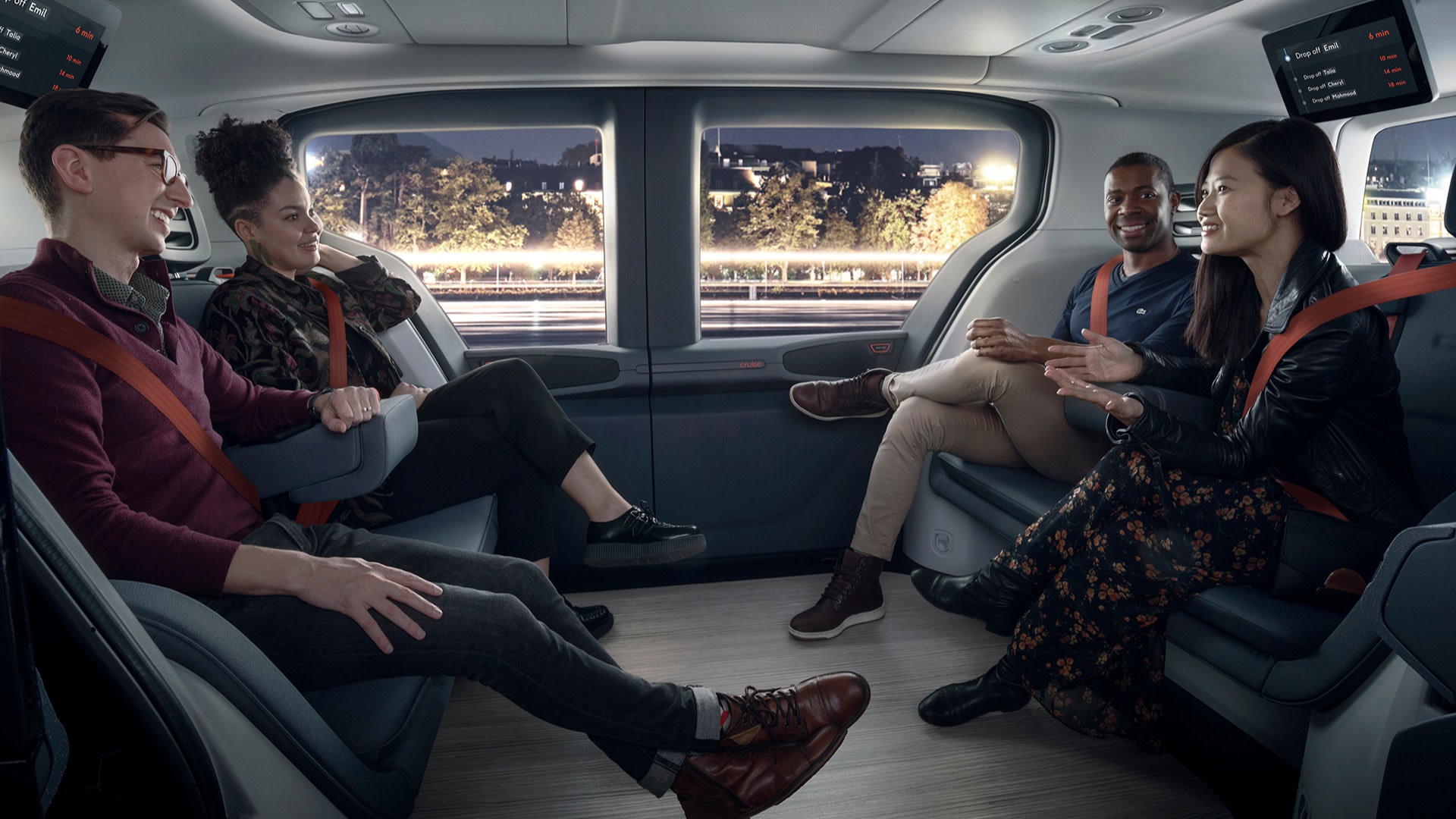Cruise, the GM-majority-owned company working on autonomous technology, is taking another step in its mission to put robotaxis on public roads, and has asked a California regulator for permission to test the production version of its autonomous pod, the Origin, on public roads in San Francisco.
An application by Cruise to the California Department of Motor Vehicles was discovered by The Wall Street Journal. In it, the company asks for permission to test the new vehicle in limited areas, at low speeds, when the weather is good. It plans, however, to expand over time.
That is similar to the path taken by the company to gradually introduce its other vehicle, a hatchback based on the Chevrolet Bolt, onto San Francisco streets. Unlike the Origin, the Bolt-based vehicle that is currently operating on public roads has a steering wheel, driver controls, and four forward facing seats, meaning that the car can be tested with a human operator, in case things go wrong.
Read: Human-Operated Cruise Origin Testing In California, Coming To Public Roads Soon
And while this vehicle looks like our driverless Origin, it is actually a customized prototype designed to be driven by a human. This helps us validate perception models and object tracking systems specific to the Origin.
— cruise (@Cruise) October 16, 2022
The Origin, meanwhile, is a pod that was designed exclusively to be a robotaxi. That means that it has seats that face one another, sliding doors, and soon no driver controls. Although a human-operated version of the Origin was deployed for testing in October, these applications would allow Cruise to test the fully autonomous version of the Origin.
If approved, Cruise will be able to test its vehicle at speeds of up to 35 mph (56 km/h) at all times of day, except when the weather is bad. This application would not, however, allow Cruise to test the Origin with passengers inside. In order to operate as a robotaxi, the company will need permission from a separate regulator that oversees commercial vehicles.
Cruise says that it has developed a suite of tests specifically for autonomous vehicles to verify the Origin’s capabilities and on-road compliance with regulations and industry standards. Earlier this year, it became the first company to earn a robotaxi license in California, allowing it to charge passengers for rides in its Bolt-based AV.
A San Francisco Story: while driving a colleague home from work we stumbled upon a @Cruise self-driving car no longer self-driving. It was blocking Sacramento at Mason. “Jasper” the car was playing tunes but no one was inside. @SFMTA_Muni bus had to reroute. pic.twitter.com/NYYdeRmNPD
— Dan Thorn (@DanThorn_) September 23, 2022
Despite that, its operations haven’t been without their hiccups. The Bolt-based AV is noted for getting confused and pulling over, often blocking traffic in the process. In September, meanwhile, Cruise was forced to recall the driverless Bolt, because of an accident that resulted in minor injuries.
The company claimed at the time, that the human driver of the other vehicle in the accident was at fault, but chose to update how its vehicle operates nonetheless, in order to help it better handle unexpected occurrences during left turns (the scenario in which the accident happened).
Regardless, Cruise’s request to California shows that it is still committed to developing its autonomous vehicles, despite other major industry players, like Ford and Honda, pulling back. With the Origin, GM previously said it expects Cruise to generate $1 billion in revenue annually by 2025, and $50 billion by 2030, which may explain its conviction.



